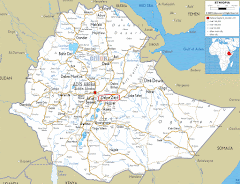
 We boiled the corn and lime in water and let it sit overnight. In the early morning, I took the washed and drained corn to the molino—the mill—a few blocks away. It took 20 seconds and cost 3 pesos (2 ½ cents) to have the corn ground into a thick paste.
We boiled the corn and lime in water and let it sit overnight. In the early morning, I took the washed and drained corn to the molino—the mill—a few blocks away. It took 20 seconds and cost 3 pesos (2 ½ cents) to have the corn ground into a thick paste. 

Tonya and Bob then set about adding just the right amount of water. After rolling the paste into balls, there were two options— flattening the paste with the traditional wooden press or flattening the balls into tortillas by hand for a thicker result called gorditas. The trickiest part was getting the flattened tortilla onto the hot griddle without it losing its round shape. When the first tortilla flops, according to Tonya, it means someone will come visit. (Sure enough, that afternoon, someone knocked on our door!)
 While listening to Tonya’s many Mexican sayings, we both watched her smooth agility in flipping the hot tortillas over with her bare hands. When they’d made enough, we sat down to a tasty snack of fresh homemade gorditas filled with a ground beef and potato mixture called picadillo. Bob is now the tortilla guy in our family.
While listening to Tonya’s many Mexican sayings, we both watched her smooth agility in flipping the hot tortillas over with her bare hands. When they’d made enough, we sat down to a tasty snack of fresh homemade gorditas filled with a ground beef and potato mixture called picadillo. Bob is now the tortilla guy in our family.
 Centro Infantil Pre-School was established a few years ago. Some of our friends in San Miguel were involved in the set-up and continue to be engaged in fund-raising efforts. The pre-school is a kind of head-start program for children of low-income families, many of whom are single moms. The mothers were honored recently at a Mothers Day festival where the children danced salsa, rock and roll, and traditional Mexican dances, all in brightly colored costumes, led by the vivacious school principal, Patricia Palacios.
Centro Infantil Pre-School was established a few years ago. Some of our friends in San Miguel were involved in the set-up and continue to be engaged in fund-raising efforts. The pre-school is a kind of head-start program for children of low-income families, many of whom are single moms. The mothers were honored recently at a Mothers Day festival where the children danced salsa, rock and roll, and traditional Mexican dances, all in brightly colored costumes, led by the vivacious school principal, Patricia Palacios.  In the English classroom, we have four groups of 10 students at a time, for 20 minutes with each group. I’m helping the other volunteer teachers develop a curriculum and try out some new ideas. The questions—who we teach, what we teach, how we teach, and why we teach—are important questions for English teachers to ask, whether we work with young or old, rich or poor. I’m glad for the opportunity to once again be asking these questions. And while pondering the “answers,” I’ll be doing TPR (Total Physical Response) activities and singing “Head and Shoulders, Knees and Toes” with the kiddos.
In the English classroom, we have four groups of 10 students at a time, for 20 minutes with each group. I’m helping the other volunteer teachers develop a curriculum and try out some new ideas. The questions—who we teach, what we teach, how we teach, and why we teach—are important questions for English teachers to ask, whether we work with young or old, rich or poor. I’m glad for the opportunity to once again be asking these questions. And while pondering the “answers,” I’ll be doing TPR (Total Physical Response) activities and singing “Head and Shoulders, Knees and Toes” with the kiddos.
 Every week Bob and I meet interesting people from all over Mexico who now live in San Miguel. We come away with improved Spanish conversation skills and with the satisfaction of having made new acquaintances. I’ve talked with Angelina, a mother of four from a nearby village, a Spanish teacher named Beatrice who gave me tips on setting up English classes in San Miguel, a young woman named Corina who recently returned from a year in Vancouver, and today, a young man named Armando who weaves and sells wool rugs at the artisans market in town. Business has been slow recently, so practicing English gives Armando something to look forward to. Today Bob talked with Alfonso, a young man who coaches soccer and works in the family restaurant.
Every week Bob and I meet interesting people from all over Mexico who now live in San Miguel. We come away with improved Spanish conversation skills and with the satisfaction of having made new acquaintances. I’ve talked with Angelina, a mother of four from a nearby village, a Spanish teacher named Beatrice who gave me tips on setting up English classes in San Miguel, a young woman named Corina who recently returned from a year in Vancouver, and today, a young man named Armando who weaves and sells wool rugs at the artisans market in town. Business has been slow recently, so practicing English gives Armando something to look forward to. Today Bob talked with Alfonso, a young man who coaches soccer and works in the family restaurant. 
